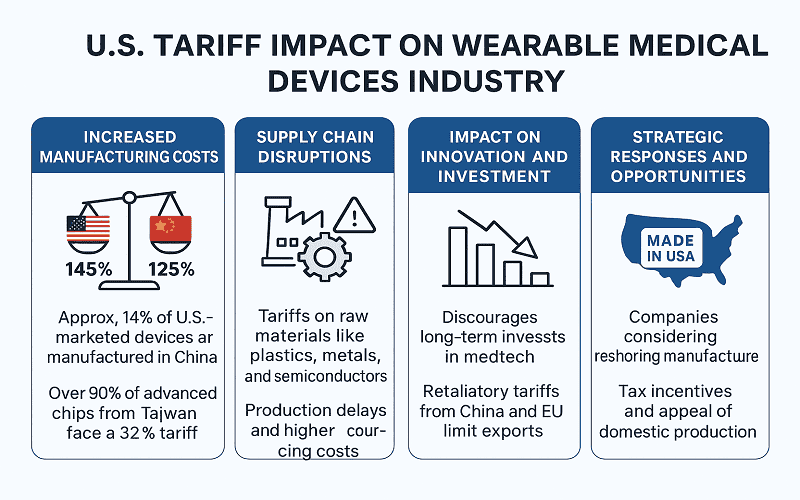Introduction
The global Wearable Medical Devices Market is expected to be worth around USD 156.0 Billion by 2032, growing at a CAGR of 16.60% during the forecast period from 2023 to 2032. North America held over 38.1% market share in 2023, reaching a revenue total of US$ 13.2 Billion.
Key Market Trends and Drivers
The wearable medical devices market is expanding rapidly due to technological advancements and growing consumer awareness of health and wellness. Key product categories include activity monitors, smartwatches, patches, and continuous glucose monitors. Factors driving this growth include the rising prevalence of chronic diseases, aging populations, and a heightened focus on fitness and overall well-being.

Product Analysis
Wearable medical devices can be categorized into diagnostic and therapeutic devices. Diagnostic devices include sleep monitoring devices, electrocardiographs (ECG), fetal and obstetric devices, and neuromonitoring devices. Therapeutic devices include pain management devices, insulin/glucose monitoring devices, rehabilitation devices, and respiratory therapy devices.
Emerging Trends
Recent trends in the wearable medical devices market include increased adoption among seniors, growth in fitness tracker usage, and a surge in remote patient monitoring. There’s also a rising demand for sleep trackers and expansion in chronic disease management. The integration of wearable data with telehealth services is becoming more prevalent.
Recent Developments
Several companies have made significant advancements in wearable medical technology. BD introduced the BD HealthBand for continuous glucose monitoring, NeuroMetrix launched Quell 3.0 for chronic pain management, and Ypsomed unveiled mylife Loop, an innovative wearable insulin pump system. Fitbit introduced Fitbit Care+ for comprehensive health monitoring, while Apple launched the Apple Watch Series 9 with advanced health monitoring features.
Market Outlook
The wearable medical devices market is poised for continued growth, driven by technological innovations, increasing adoption rates, and expanding applications in healthcare. The market is expected to play a critical role in the future of healthcare and wellness management.


